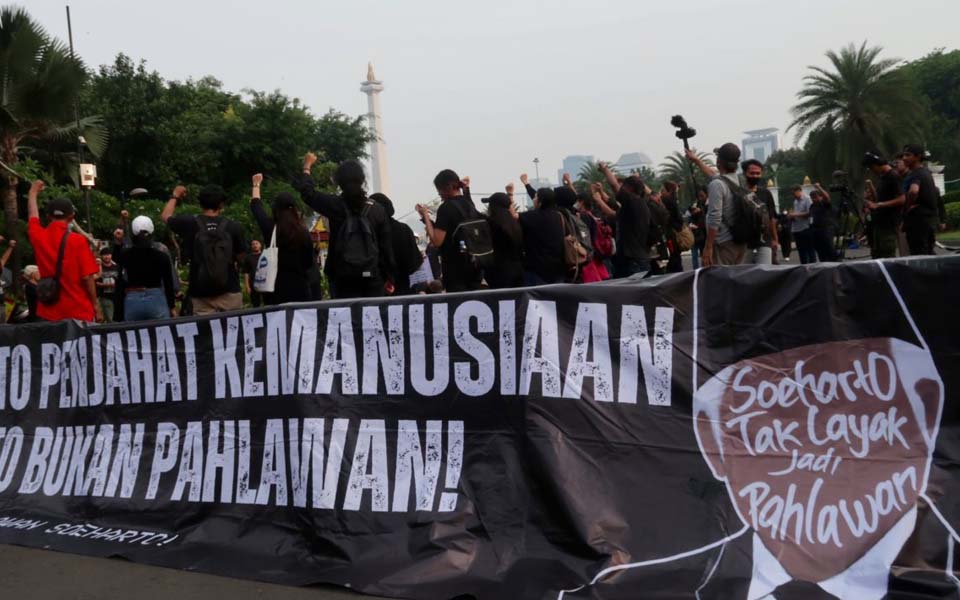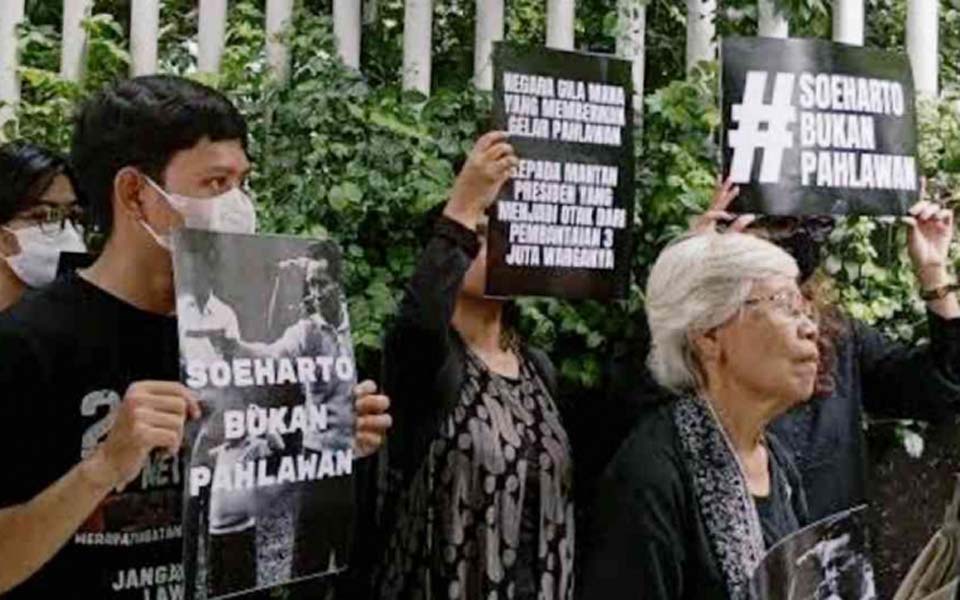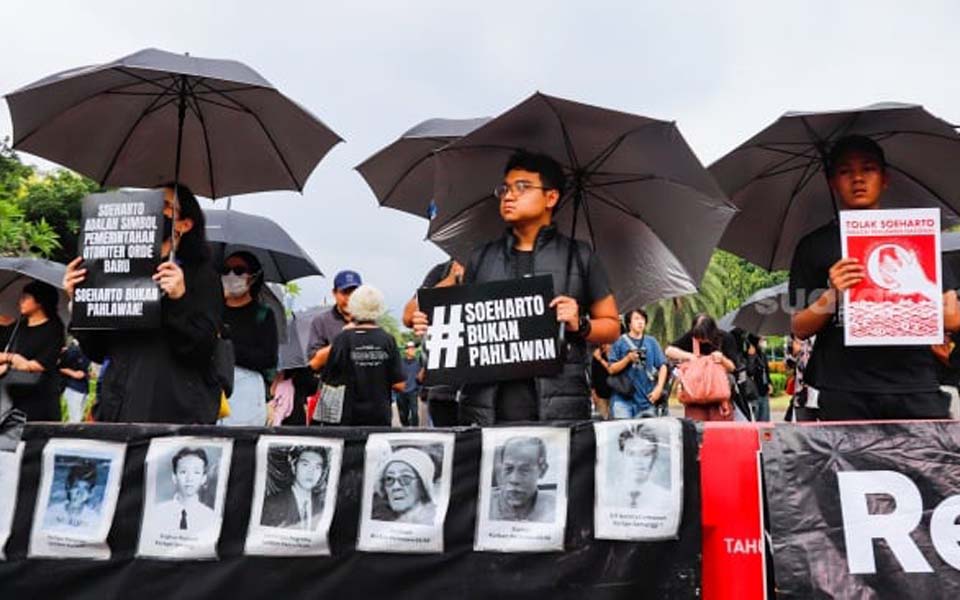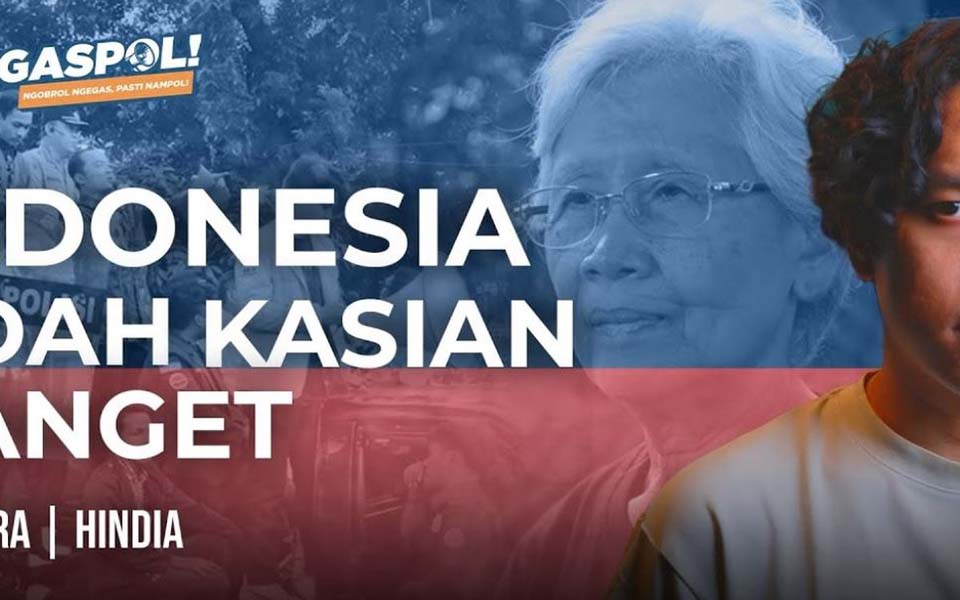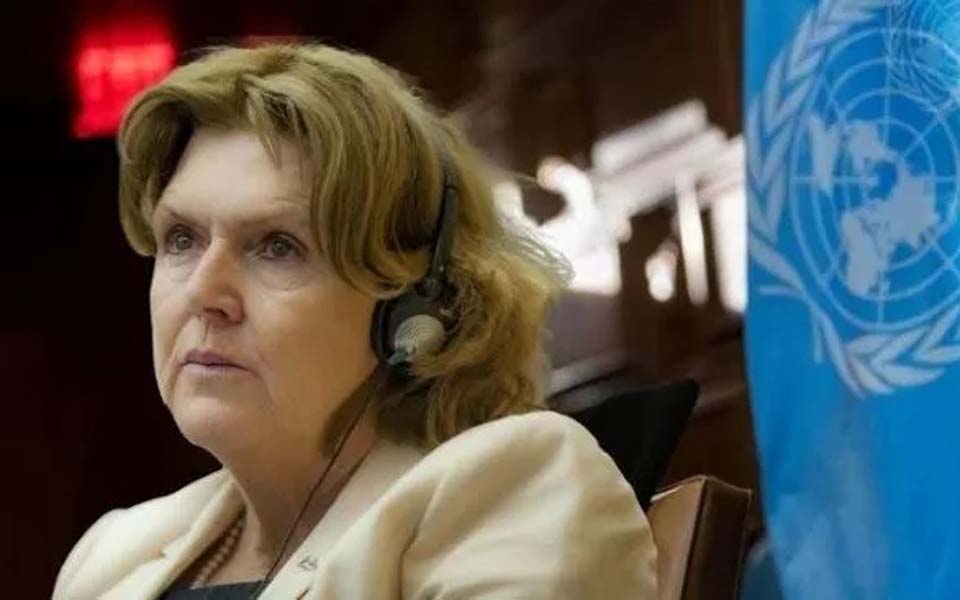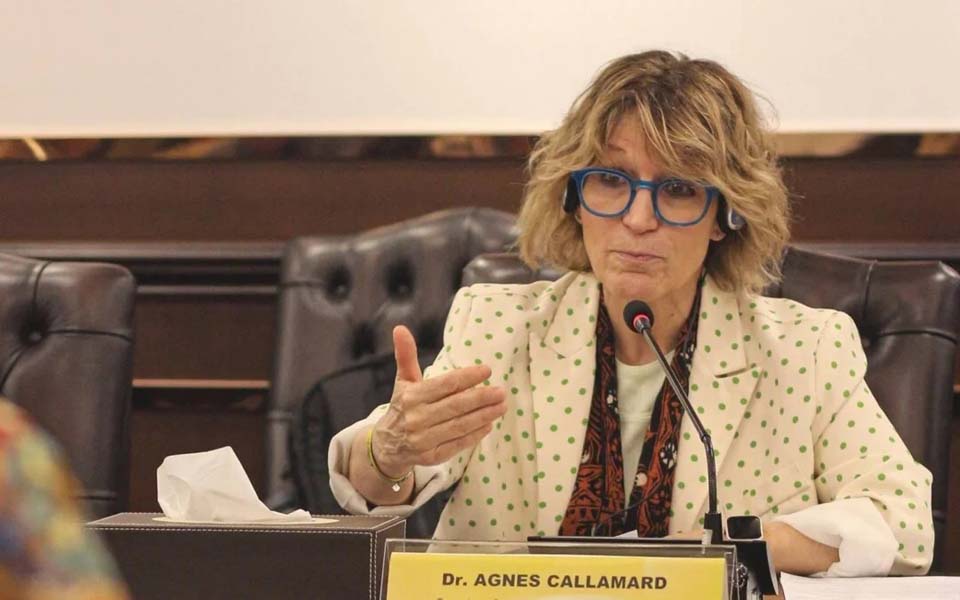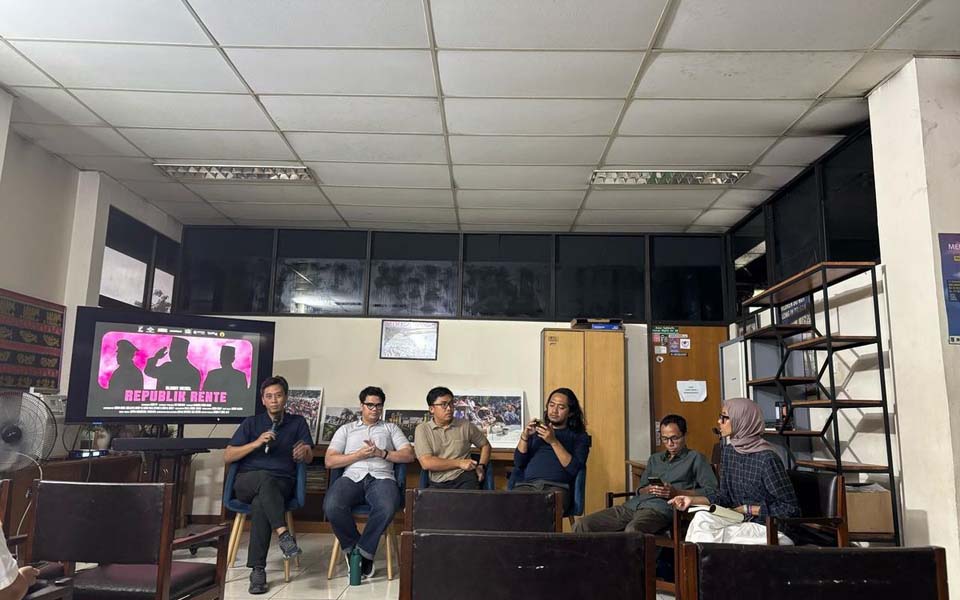The children enjoyed themselves, dancing in the rain in front of the ogres. There were none who appeared troubled, what there was, was merriment. A million drops of rain and a thousand thunderbolts could not have diminished their desire to play among the water puddles.
And the two ogres, their insolent faces still and fixed, rigidly stood guard over a black flag of grief and sorrow. “The ogres are a symbol of power, a symbol of those in power”, said Riyadi, the deputy coordinator of the Five Mountain Arts Community from Magelang in Central java, who on Thursday February 19 took part in animating a Thursday action by victims and the families of victims of human rights violations.
This particular Thursday action (Kamisan) was deluged by heavy rain. A number of representatives of victims and human rights activist were present to watch the Magelang artists perform the dance. This was the 100th Thursday action.
The Thursday actions began on January 18, 2007. For the victims and families of victims, accomplishing these one hundred silent actions has not been an easy matter.
They have had to face an attitude of neglect and disregard by the government. Suciwati, the wife of the late Munir, said that they have often had to swallow a bitter pill because President Susilo Bambang Yudhoyono has failed to keep his promise.
The victims however, have never felt that the actions have been in vain. On the contrary, their spirit of independence has reaffirmed for them that the actions must be continued in order to fight legal impunity for human rights violators. And their silent actions, they hope, will become an inspiration for reform.
For the victims, the Thursday actions represent a type of movement that was born as a consequence of the decayed justice system and state policies that have failed to represent justice. They have adopted this means because the institutions of justice, such as the Attorney General’s Office, along with political institutions such as the House of Representatives, have in fact become an obstacle to the resolution of human rights case.
The facts are that after 10 years of reformasi, not one human rights violator has been indicted by the courts. On the contrary, those who have been implicated as being involved and responsible for human rights violations have in fact gained positions of respect. It is precisely this that is symbolised by the ogres who feel that they sit with authority in the seats of power.
They defend something that is transitory, which has been rejected by the children who in fact feel free and independent beneath the splashing water of the rain. “We turn our backs on the [State] Palace that should be a symbol of power that brings prosperity [to the people],” said Sumarsih, a family member of a victim of the 1998 Semanggi shootings.
Yet of late, it is the Palace also that has sought to be defended and fought for by the political elite of this country. The rain became progressively heavier as the children danced restlessly in front of the two ogres.
“Cempe, wedhus, cempe, wedhus, the lamb, the goat, the lamb, the goat” came the refrain from their mouths as they followed the dance. And the two ogres remained silent and stiff, standing erect without expression, firmly clutching the black flag of grief and sorrow. Their hearts will never again be free. (JOS)
Notes:
The Thursday actions were inspired by opposition movements of victims of human rights violations and their families in various parts of the world such as a Korean women’s movement demanding justice in the jugun ianfu case (sex slaves during the Japanese occupation). Wearing white clothing, every Wednesday, they hold a demonstration in front of the Japanese Embassy in Seoul. Another example was the Argentina women’s movement of parents of children who were abducted and disappeared by the Argentine military junta.
According to Sumarsih, the idea to hold the actions emerged over a period of several discussions. One of these was a meeting between members of the Solidarity Network for Victims and Families of Victims (JSKKK) and the Commission for Missing Persons and Victims of Violence (Kontras) in late 2006. At a meeting on January 12, 2007, it was agreed that the demonstrators would wear black clothing and carry black umbrellas.
According to Sumarsih, the Thursday actions will continue until the government’s commitment to resolve past human rights cases becomes a reality and a human rights ad hoc court is established to try the perpeterators.
[Translated by James Balowski.]







